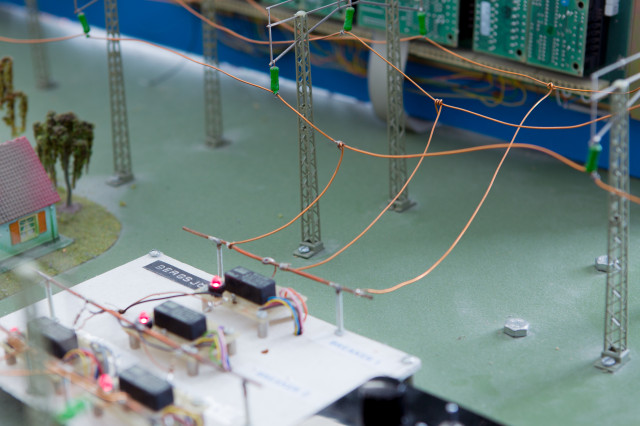The course includes four main fields of study: frequency control, introduction to electricity markets, calculations of prices and carbon dioxide emissions and Monte Carlo simulation of electricity markets. Theory and examples are presented in lectures. The students may then apply the theory on simplified (but realistic) examples.
EG2230 Electricity Pricing and Emissions 6.0 credits

The course provides an introduction to electricity markets and electricity pricing. The course also includes models and methods to simulate electricity markets focusing on carbon dioxide emissions.
Information per course offering
Information for Autumn 2025 Start 27 Oct 2025 programme students
- Course location
KTH Campus
- Duration
- 27 Oct 2025 - 12 Jan 2026
- Periods
Autumn 2025: P2 (6 hp)
- Pace of study
33%
- Application code
51130
- Form of study
Normal Daytime
- Language of instruction
English
- Course memo
- Course memo is not published
- Number of places
Places are not limited
- Target group
- Open for all master programmes as long as it can be included in your programme.
- Planned modular schedule
- No information inserted
- Schedule
Contact
Course syllabus as PDF
Please note: all information from the Course syllabus is available on this page in an accessible format.
Course syllabus EG2230 (Autumn 2022–)Content and learning outcomes
Course contents
Intended learning outcomes
After passing the course, the student shall be able to
- explain how the balance between generation and consumption is maintained in an electric power system, calculate how the frequency is affected by various events in the power system and design the frequency control so that there are sufficient margins in the power system,
- describe the principles of how electricity markets can be designed including regulatory framework to limit carbon dioxide emissions from electricity generation and to promote carbon dioxide free electricity generation,
- perform rough estimations of electricity prices as well as analyse factors that have a large importance for the electricity pricing and carbon dioxide emissions, and to indicate how these factors affect for example producers and consumers,
- apply Monte Carlo simulation to simulate an electricity market and use the simulation results to analyse the consequences of different measures
- give a short oral presentation of the solution to a problem in electricity pricing and emissions,
in order to learn theory and calculation methods to analyse electricity pricing and emissions from electricity generation.
Literature and preparations
Specific prerequisites
Knowledge in numerical methods, 6 higher education credits, equivalent to completed course SF1519/SF1545/SF1546/SF1547.
Knowledge in probability theory, 6 higher education credits, equivalent to completed course SF1917/SF1918/SF1920.
Literature
Examination and completion
Grading scale
Examination
- SEM1 - Seminars, 3.0 credits, grading scale: P, F
- TEN1 - Written exam, 3.0 credits, grading scale: P, F
- PRO2 - Project assignment, 0 credits, grading scale: A, B, C, D, E, FX, F
- PRO1 - Project assignment, 0 credits, grading scale: A, B, C, D, E, FX, F
Based on recommendation from KTH’s coordinator for disabilities, the examiner will decide how to adapt an examination for students with documented disability.
The examiner may apply another examination format when re-examining individual students.
If the course is discontinued, students may request to be examined during the following two academic years.
PRO1 and PRO2 are optional modules.
Pass grade on the modules SEM1 and TEN1 are required for the final grade E. Students who have passed SEM1 and TEN1 and pass one of the two optional project assignments will receive the highest grade from PRO1 and PRO2 as final grade.
Examiner
Ethical approach
- All members of a group are responsible for the group's work.
- In any assessment, every student shall honestly disclose any help received and sources used.
- In an oral assessment, every student shall be able to present and answer questions about the entire assignment and solution.
Further information
Course room in Canvas
Offered by
Main field of study
Education cycle
Supplementary information
In this course, the EECS code of honor applies, see:
http://www.kth.se/en/eecs/utbildning/hederskodex